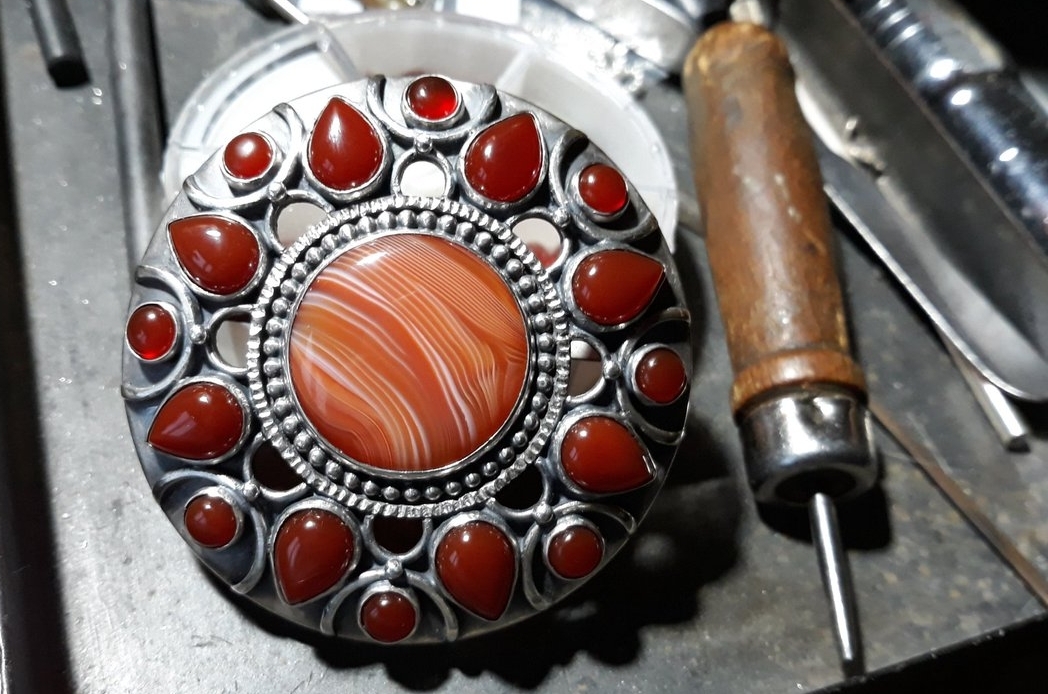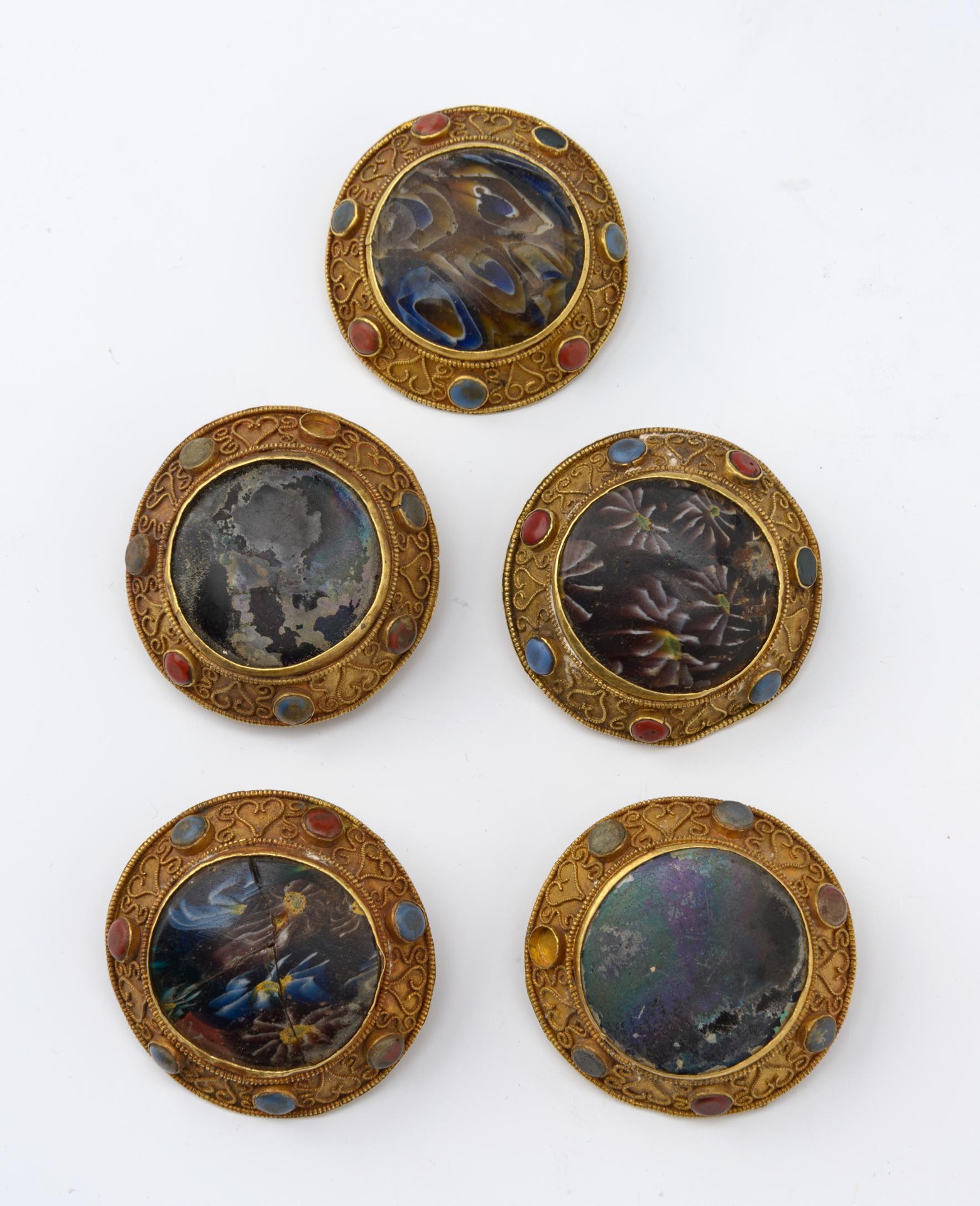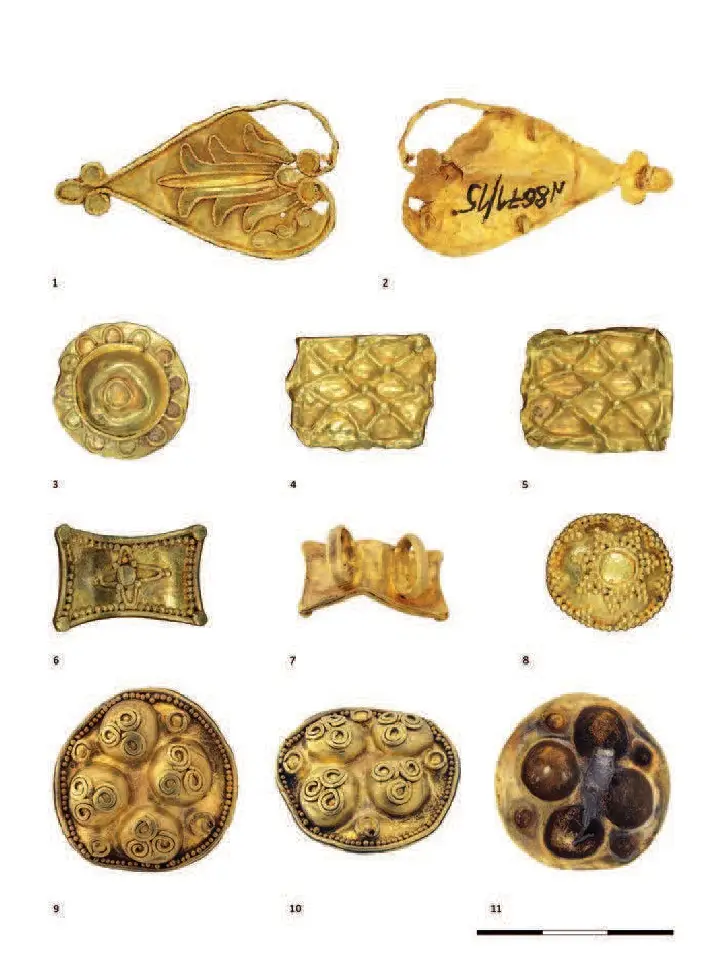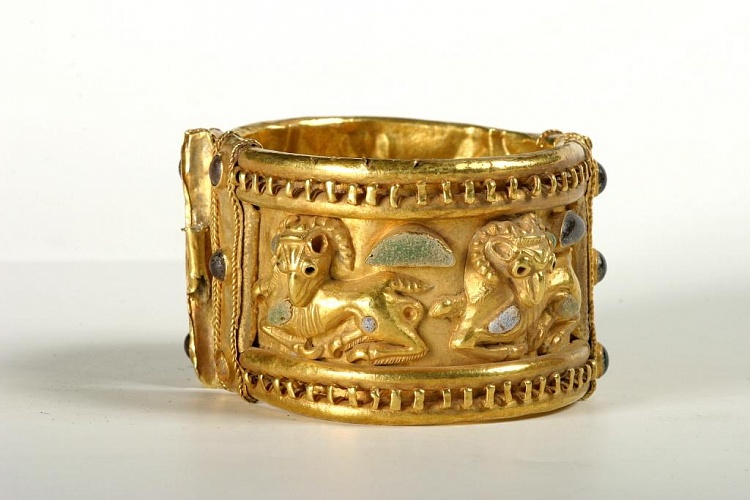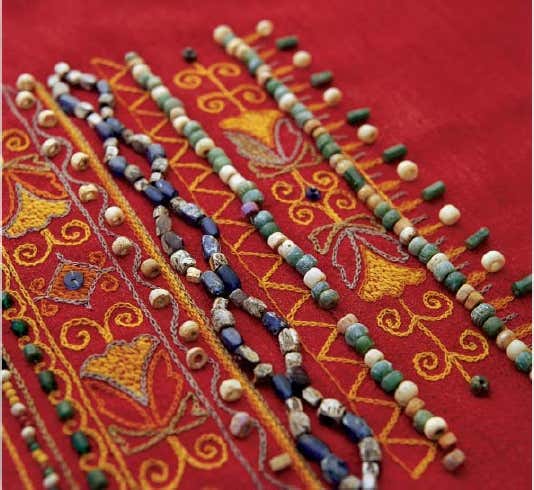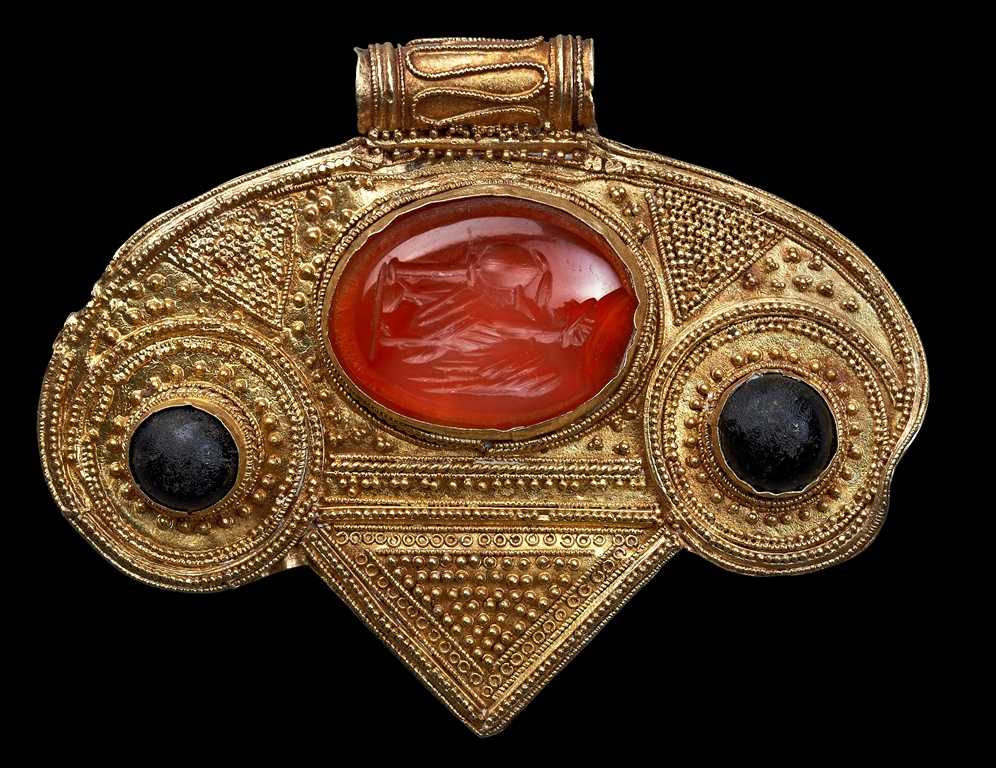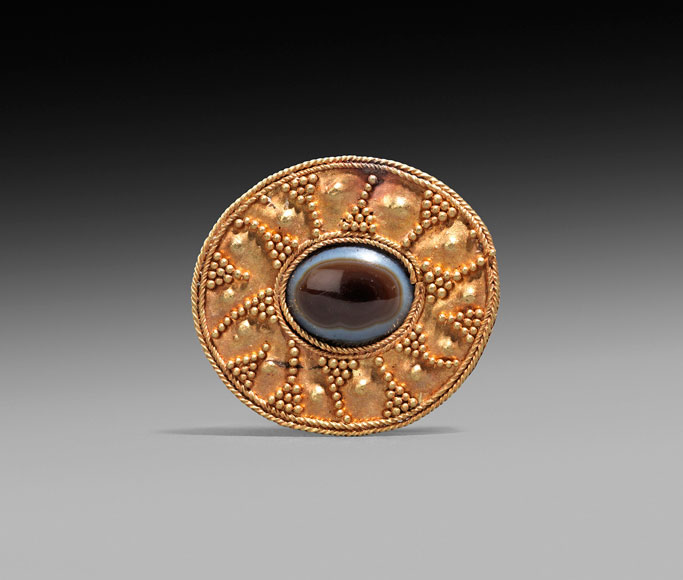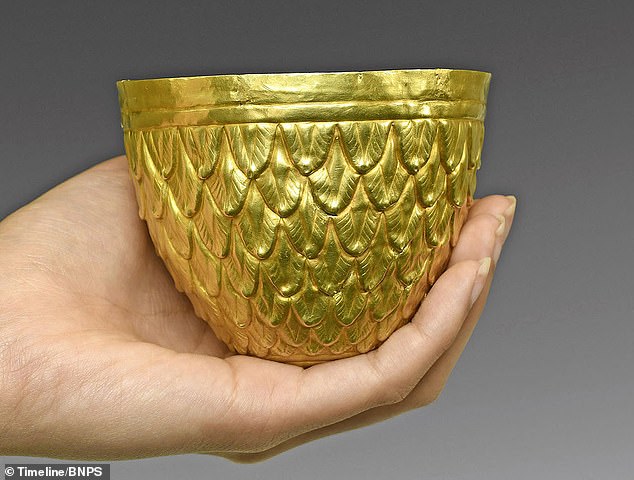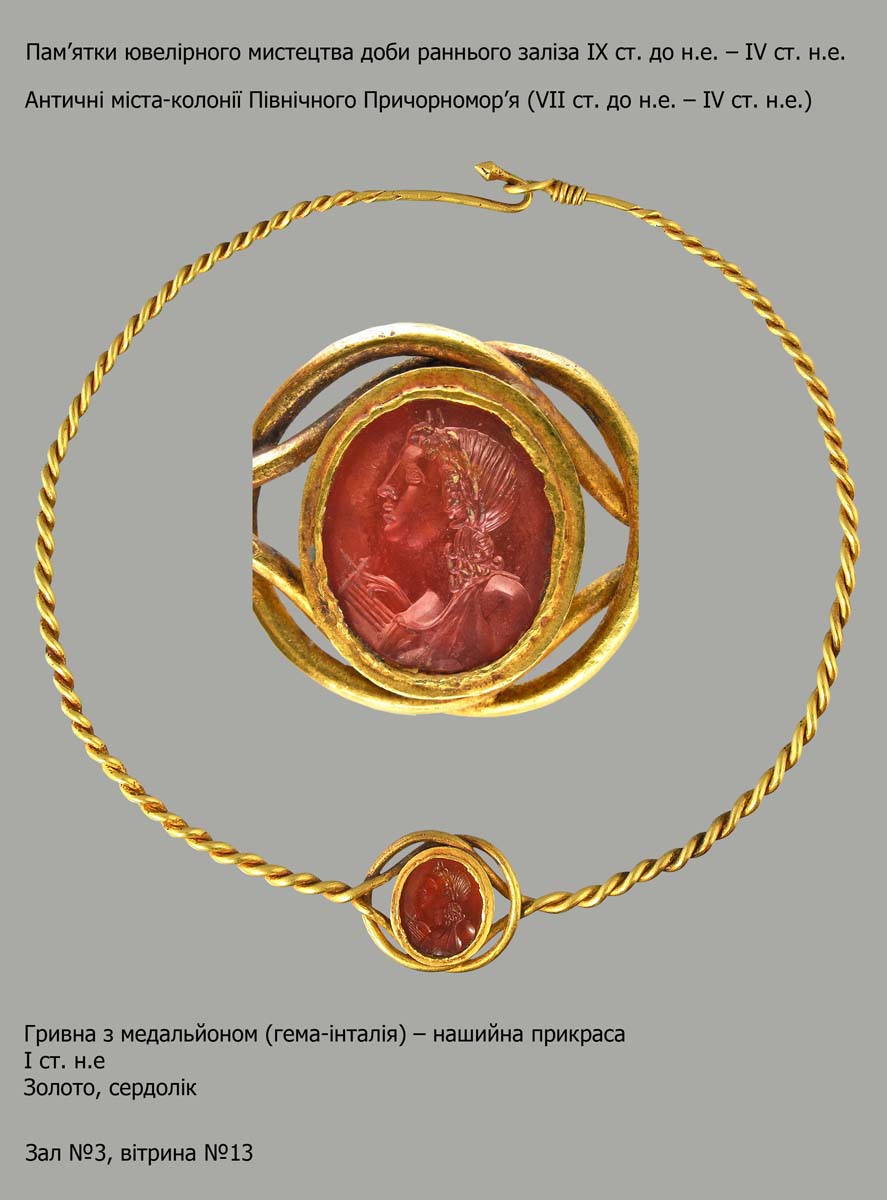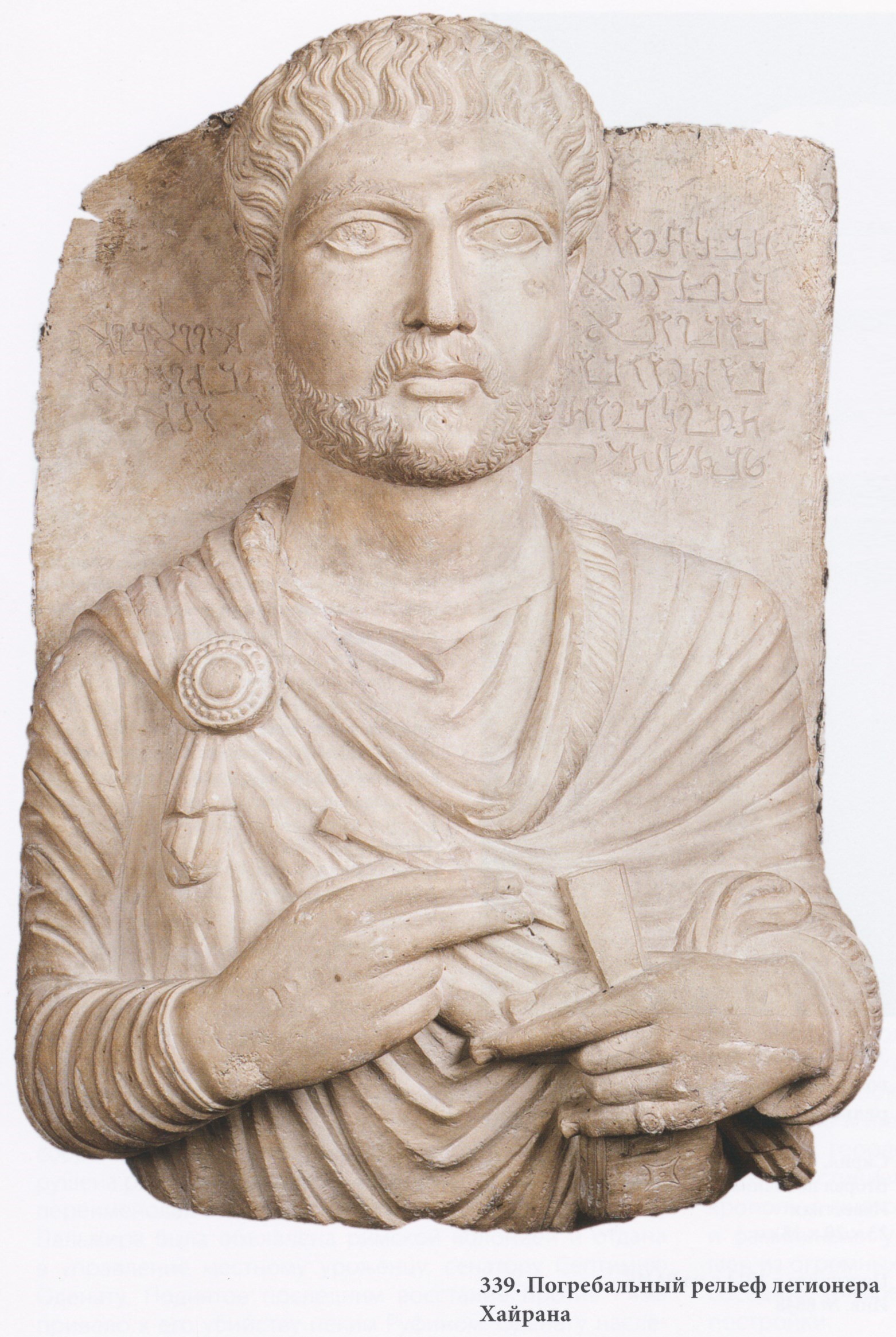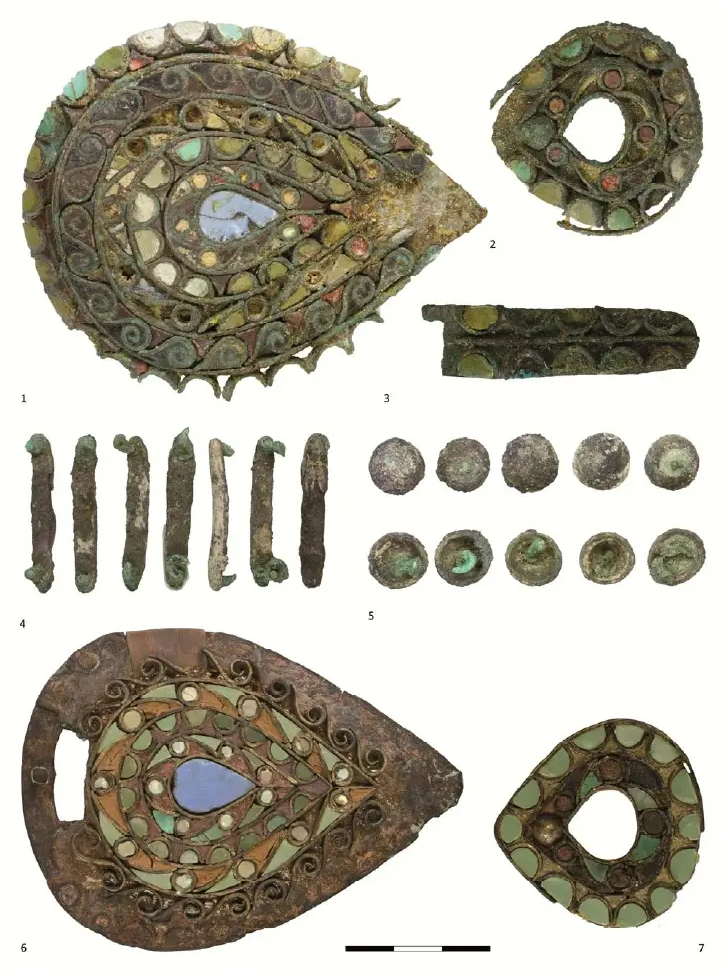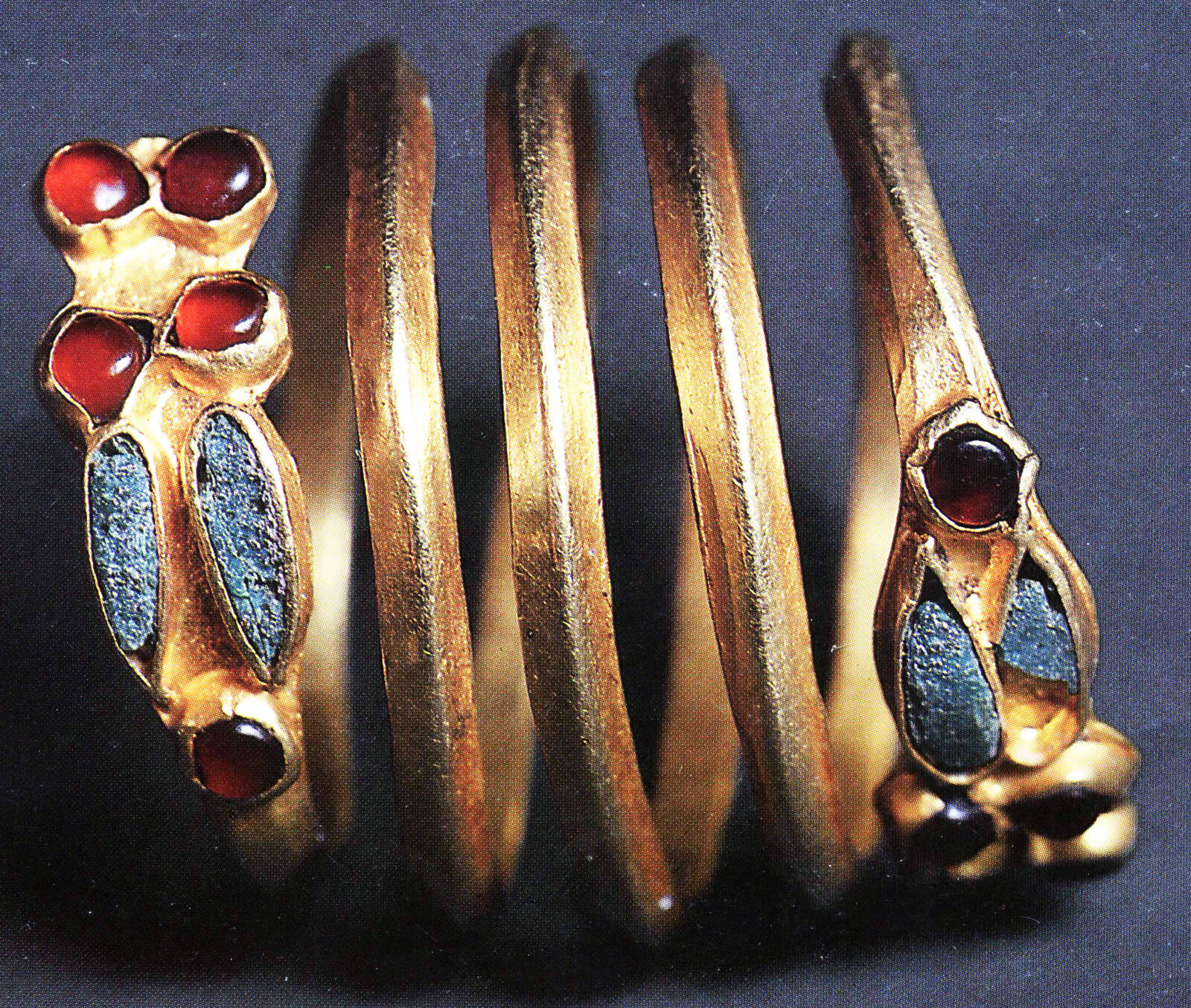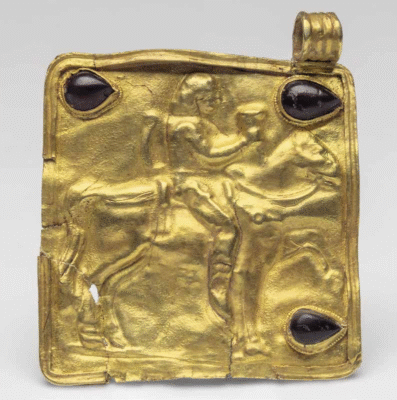
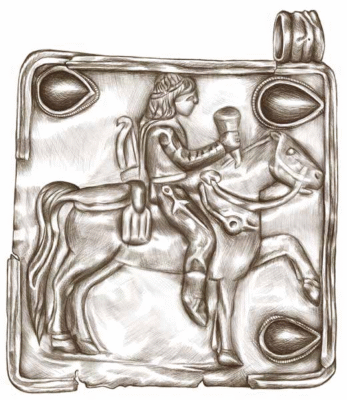
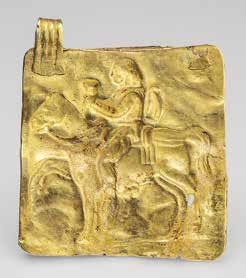
Source:
Sergey Voroniatov, T. V. Ryabkova, Pendant with a Horseman // Epochs, Burial Mounds, Findings: Honouring the 175th Anniversary of Nikolay Veselovsky. Exhibition Catalogue. Saint Petersburg, 2024 [Подвеска со всадником // Эпохи, курганы, находки: К 175-летию со дня рождения Н.И. Веселовского. Каталог выставки. СПб.]
https://www.academia.edu
Gold and garnet. 5.8 x 5 cm. 3rd – first half of the 4th century
Acquired for the Imperial Archaeological Commission in Maikop, 1915. Received in 1926 from GAIMK
The Hermitage Museum, St. Petersburg. Inv. No. 2514–4
A decoration in the form of a square plate with a pair of ears for hanging. On the plate there is a relief image of a horseman on a horse, made in the basma technique. In the upper corners and in the lower right corner, high castes with inserted teardrop-shaped almandines are soldered. Along the perimeter of the front side of the plate, an edging of a flat relief ribbon is soldered. The ears, one of which is lost, are made of a wide strip with longitudinal ribbing bent into a loop.
“The iconography of the Iranian horseman – a god or hero was widespread in various regions of Eurasia starting from the Scythian period and received a new impetus for development in the territory of the Bosporan Kingdom in the Sarmatian era (1st-4th centuries AD). Since the relief of the image is pressed onto the gold leaf using a metal or wooden matrix, its details can be observed not only from the front (positive), but also from the back (negative). The latter gives more expressive outlines of the figures of the rider and horse. The man has a hairstyle with wavy curls, falling to the shoulders and fixed with a headband or diadem. He is dressed in a short jacket with a belt and loose trousers. On the right hand, holding a rhyton, folds of the sleeve are visible (possibly decor). A detail of clothing in the neck area can be interpreted as a cloak-cape falling behind the back.
On the hip, a Sarmatian dagger with a ring-shaped pommel of the handle is visible, fastened with straps. The strip separating the trouser leg from the shoe may be the upper part of a low soft shoe, the toe of which is lowered down. In his left hand, the rider holds the reins. Behind him is a bow in a goryte.
The horse’s leisurely gait is indicated by the raised left front leg and the hind legs standing almost next to each other. The horse has a short mane and a long tail. The breast strap of the bridle, going to the front bow of the saddle, is decorated with a round phalera. Toroks descend from the back bow.
The design of the jewelry and its small size suggest that it was used as a neck ornament.
There is a series of images that are stylistically and compositionally close to the published one: for example, one of them decorates the golden wreath of the famous “burial with a golden mask”. It is believed that such images reproduce a certain ritual, since in some it is visible that the rider is approaching the altar.”
